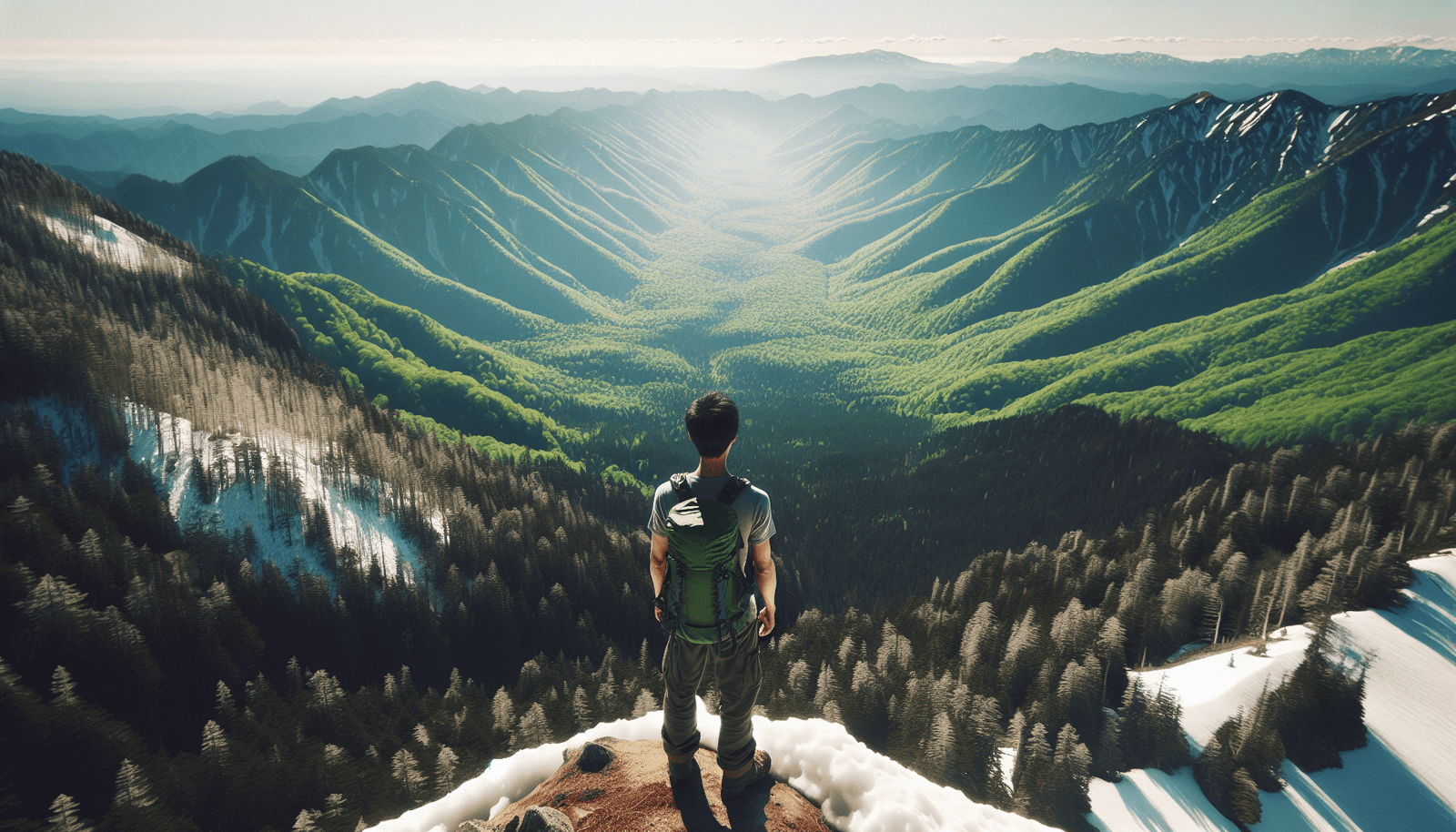Hiking And Trekking
If you’ve ever felt the call of the wild – the lure of verdant trails, lofty peaks, and peace that only the great outdoors can offer – then this article is for you. “Hiking and Trekking” will take you on an exciting journey into the enthralling world of wilderness exploration. You’ll discover the differences between these two popular outdoor activities, benefits for both body and soul, tips and tactics to improve your outdoor experience, and breathtaking destinations that should be on every adventurer’s bucket list. Prepare to have your wanderlust ignited.

Understanding the Difference between Hiking and Trekking
To fully appreciate the charm of outdoor adventures, comprehending the distinction between hiking and trekking makes a significant difference. Both activities share similarities but are marked by distinct variations that set them apart.
Definition of Hiking
Hiking is a recreational activity usually done on well-marked trails and does not pose substantial challenges or risks. It is an outdoor journey of less than a day that you undertake on foot in natural environments often on pre-charted paths called hiking trails.
Definition of Trekking
On the other hand, trekking is a multi-day adventure, more strenuous and typically done on rural or wild terrain. It refers to a long arduous journey, typically on foot. While treks can be on marked trails, they often take you through much more diverse, and often challenging terrains.
Key Differences
While both hiking and trekking involve walking in natural environments, the key difference lies in the intensity and duration. Hiking typically takes no more than a day, but trekking is a much longer and more physically demanding endeavor. Additionally, trekking often involves navigation and survival skills, often through less charted paths.
Preparation for Hiking and Trekking
Proper planning is the key to enjoy and stay safe while hiking and trekking. The more you prepare beforehand, the smoother your journey will be.
Physical Fitness Training
To have an enjoyable experience, you must train yourself physically before heading out on a long hike or trek. Walking, jogging, muscle strengthening exercises and cardiovascular training contribute to improving your physical fitness.
Understanding the Trail
Learn the route you will be taking. Study the trail map, take notes, and have a clear image of where you’re going. It’s vital to research the difficulty, length, elevation gain, and the logistical details of the path beforehand.
Acclimatizing to Weather and Altitude
Adapting your body to the changes in weather and altitude is necessary for high-altitude trekking trips. Starting your journey low and going slow to higher altitudes allows your body to adjust naturally.
Prepare for Emergencies
Knowing what to do in an emergency is crucial. Carry a first-aid kit, learn about the survival techniques and make sure your phone is charged.
Essential Gear for Hiking and Trekking
Selecting the right equipment can make or break your outdoor adventure. Equipments’ weight and functionality are critical factors to consider.
Choosing the Right Footwear
Your choice of hiking shoes or boots depends on the type of trail and the weather condition. In any case, they should be comfortable, waterproof and provide good ankle support.
Clothing and Layering
Clothing choice depends on the weather. It’s a smart move to dress in layers. Synthetic or woolen fabric is best, as it extracts moisture from the skin. Don’t forget rain gear and hats.
Backpacks and Trekking Poles
Choose a lightweight backpack that can hold essential supplies. Trekking poles can help maintain balance on rugged terrain.
Navigation Tools
A map and compass are critical for navigation. These days, several smartphone apps can also serve the purpose.
Emergency Equipment
A first-aid kit, flashlight, multi-tool, and fire starter can come in handy in case of emergencies.
Safety Measures for Hiking and Trekking
While hiking or trekking, safety should always remain a priority.
Personal Safety
Stay on assigned trails, avoid taking unnecessary risks, maintain hydration and watch out for signs of heat stroke or hypothermia.
Environmental Safety
Follow leave no trace principles, minimize your impact on the environment, avoid feeding wildlife and properly dispose of waste.
Dealing with Wildlife
You might encounter wildlife while on your trail, learn about the local fauna, keep a safe distance and don’t approach or feed them.
Planning and Informing Others of Your Route
Always let someone know about your hiking or trekking plan, when you are leaving, your route, and when you are supposed to return.
Health Benefits of Hiking and Trekking
Whether you’re hiking or trekking, both have impressive health benefits.
Physical Health Benefits
The physical health benefits include improved cardiovascular health, muscular fitness, stamina, and it’s a great way to stay in shape and maintain a healthy weight.
Mental Health Benefits
Hiking or trekking can reduce stress, enhance mood, and contribute to mental well-being. It quiets the mind and can bring about a sense of inner peace and calm.
Improvement in Overall Quality of Life
These activities not only have physical and mental benefits but they can also improve your quality of life. They allow you to explore and appreciate nature, contribute to better sleep and boost your creativity.
Hiking and Trekking Etiquette
Respect for Nature and Wildlife
Respect for nature is paramount in outdoor activities. Be mindful of the local flora and fauna. Remember not to harm any animal or plant life.
Maintaining Trail Cleanliness
Keeping the trail clean is every hiker’s and trekker’s responsibility. Carry your own trash and dispose of it properly.
Consideration for Other Hikers and Trekkers
Respect other hikers and trekkers. Keep noise to a minimum and yield to uphill hikers.
Best Locations for Hiking and Trekking
There are countless breathtaking hiking and trekking locations around the world.
Popular Hiking Locations in the US
The Appalachian trail, Pacific Crest Trail, Grand Canyon, Yosemite, and Zion national parks are among the top hiking areas in the US.
Famous Trekking Trails Around the World
The Everest Base Camp Trek in Nepal, The Inca Trail in Peru, Kilimanjaro in Tanzania are some of the famous trekking trails.
Finding Hidden Gem Locations
Don’t forget to look for local or less-known trails. They could be just as beautiful and less crowded.
Tips for Hiking and Trekking with Children
Hiking and trekking can be a fantastic way for kids to connect with nature and have an adventure.
Making the Trip Fun and Educational
Make the trip entertaining and educational by engaging children in activities like finding different types of rocks, wildlife spotting, and more.
Ensuring Safety for Children
Guarantee safety by taking breaks, carrying necessities, and keeping your child close by.
Choosing the Right Gear for Children
Ensure they wear comfortable shoes, suitable clothes, and have a lightweight backpack.
Advice for Solo Hiking and Trekking
Preparation for Solo Trips
Preparation is even more crucial when going solo. Ensure you have all necessary equipment, know the trail well, and keep someone informed about your itinerary.
Dealing with Loneliness and Fear
Solo adventures can be an emotional challenge. Keep yourself occupied, listen to music or podcasts.
Maintaining Communication with the Outside World
Carry a satellite phone or locator beacon to maintain communication in case of emergencies.
Surviving Difficult Conditions and Emergencies
Dealing with Bad Weather
Check weather updates before leaving, carry appropriate gear, and know when to turn back.
Finding Water and Food
Always carry enough water or tools to purify water. Pack high protein and high fiber food.
Knowing Basic First Aid and Survival Skills
Knowing basic first aid and survival skills can save your life in case of emergencies. Always carry a first-aid kit and learn how to use it.




